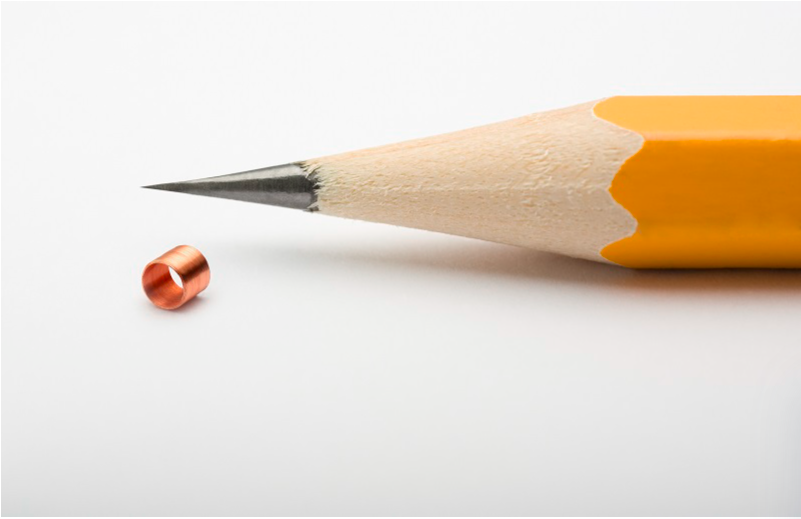If you are searching for coil winding technology, you probably need a solution. Maybe your product must be smaller. Maybe it must be more reliable. Maybe it must survive inside the body. Or inside a tiny sensor.
Coil winding sounds simple. It’s not. At small scales, tiny choices change everything. Wire thickness, winding method, bonding, and thermal handling, they all matter.
This short guide lays it out simply. No fluff. Just what really matters.
What coil winding technology actually is
Coil winding means taking a conductor and wrapping it into turns. The winding creates inductance, magnetic fields, sensing ability, or energy transfer. “Technology” here means the tools, techniques, and quality controls used to make those coils repeatable and reliable.
At the smallest scale — micro coils — the work gets delicate. Ultra-fine insulated wires must be handled. You need machines and processes that control tension, spacing, and placement to microns.
Key advances you should care about
Today’s advanced coil winding isn’t just faster. It solves problems older methods couldn’t touch.
Engineers now wind insulated copper wire at extreme thinness. We’re talking wires as fine as 9 microns in diameter. That opens designs that used to be impossible.
Connection tech also improved. It’s now possible to connect ultra-fine wires to thicker leads without breaking them. That keeps assemblies robust in real use.
Designs now aim for higher fill factor. That means more conductor in the same volume. The payoff is lower DCR losses and smaller, more efficient inductors used in power and solar applications.
Methods and tools — what you’ll see in production
There are a few standard approaches. Each has pros and cons.
Manual winding still exists. It’s flexible for prototypes and custom jobs. But manual work can’t match repeatability at micro scale.
Automated winding machines handle fine wire precisely. They control feed, tension, and turn placement to tight tolerances. That reduces scrap and rework.
Special bonding and joining techniques are used to make durable electrical contacts. These methods let tiny wires connect to pads or thicker leads without breaking.
Surface treatment, insulation trimming, and passivation steps protect coils from moisture and mechanical stress. Thermal management and testing follow. Tiny coils can heat quickly. You must test under real current and duty cycles.
Where coil winding tech is used, real examples
Micro coils show up where space and precision matter most.
Medical devices.
Tiny coils power sensors at the tip of catheters. They enable navigation and sensing inside the body. Some cryoablation and heating tools use specialized wound coils. Benatav
Solar and power electronics.
Micro-inductors with high fill factor cut losses and shrink converters. That lowers weight and improves efficiency. Benatav
Micro-sensors, magnetics research, and advanced communications. Anywhere you need magnetic fields or inductive coupling in a tiny package.
What to ask before you design or buy
If you are specifying coils, don’t rely on vague promises. Ask clear questions.
What is the minimum wire diameter they can handle?
What’s their yield at that diameter?
Can they connect ultra-fine wires to thicker wires reliably?
Ask for examples or test reports.
What tolerance on turns and placement can they guarantee?
How do they control tension and alignment?
How do they test thermal and electrical stability?
Ask to see measured DCR, Q factor, and temperature rise under your load.
Do they offer assembly and passivation suitable for your application?
Medical implants need different finishing than a solar inductor.
Integration and scale
Coil winding is one step in a system. Think about how coils will integrate into your product.
Will the coil need custom tooling or housings?
How will it be connected to PCBs or leads?
Can the supplier scale production from prototypes to thousands per month?
Good coil tech reduces headaches later. It shortens time to market. It also lowers warranty costs and field failures.
Final thought
Coil winding technology looks simple until you try to do it at very small sizes or high volumes. The winning projects are those that match design needs with the right winding tech, tight process control, and real testing. If you get those three things right, your coil will behave — not surprise you.
FAQs:
1. “Can I trust a tiny coil to last in a harsh environment?”
That fear is real. Tiny things break easier. But with proper bonding, passivation, and thermal testing, micro coils can be very reliable. Ask for real test results. Don’t accept vague assurances.
2. “What if the supplier can’t handle the wire size I need?”
That’s a nightmare. You’ll waste time and money. Always confirm manufacturing capability first. Ask for sample parts and yield numbers at the required wire size.
3. “How do I balance size versus performance?”
It’s a trade. Smaller coils save space but raise resistance and heating. The trick is to pick the right wire, core, and winding style for your priority — whether that’s low loss, high sensitivity, or minimal volume. Be clear about your must-haves before you design.







